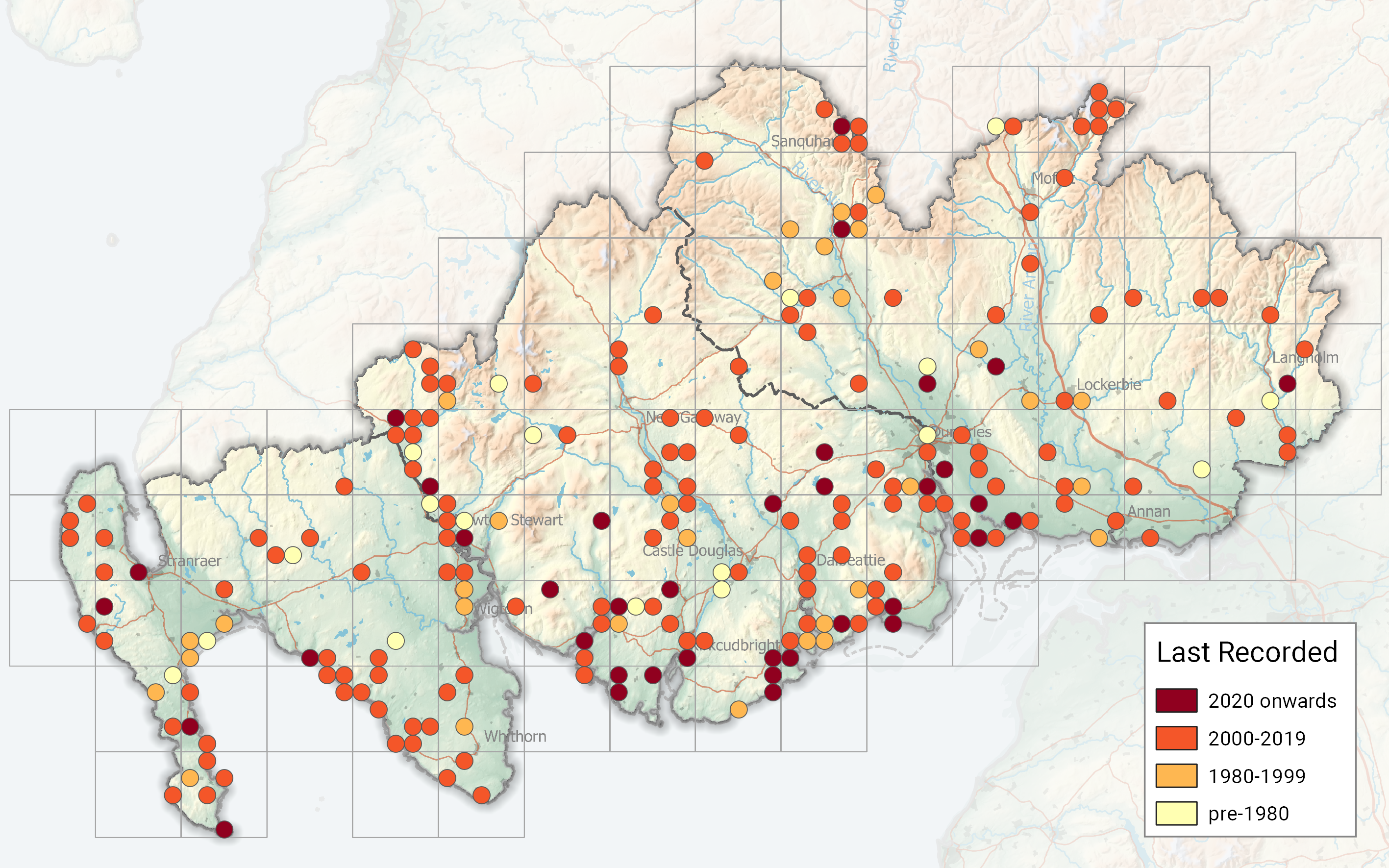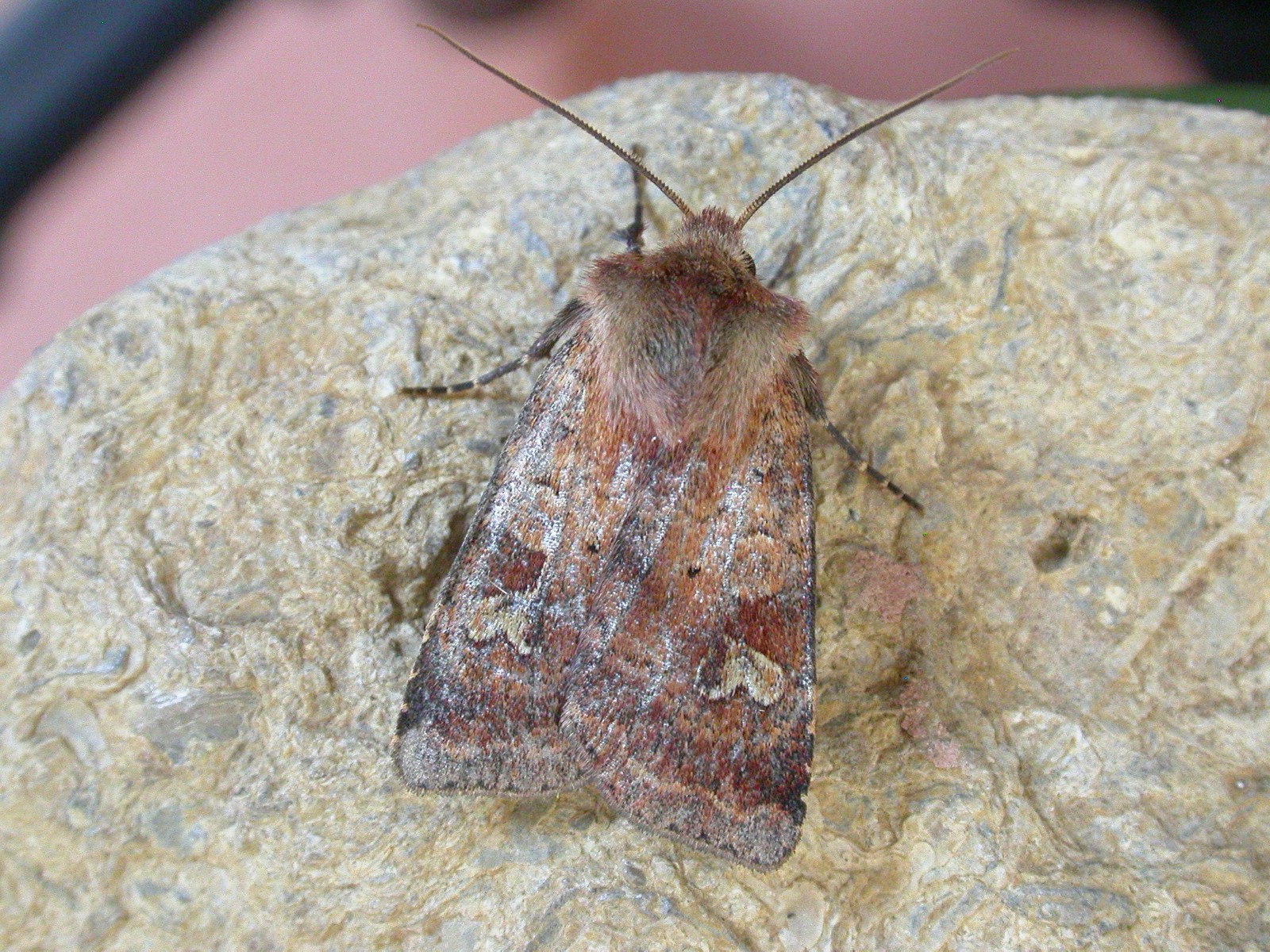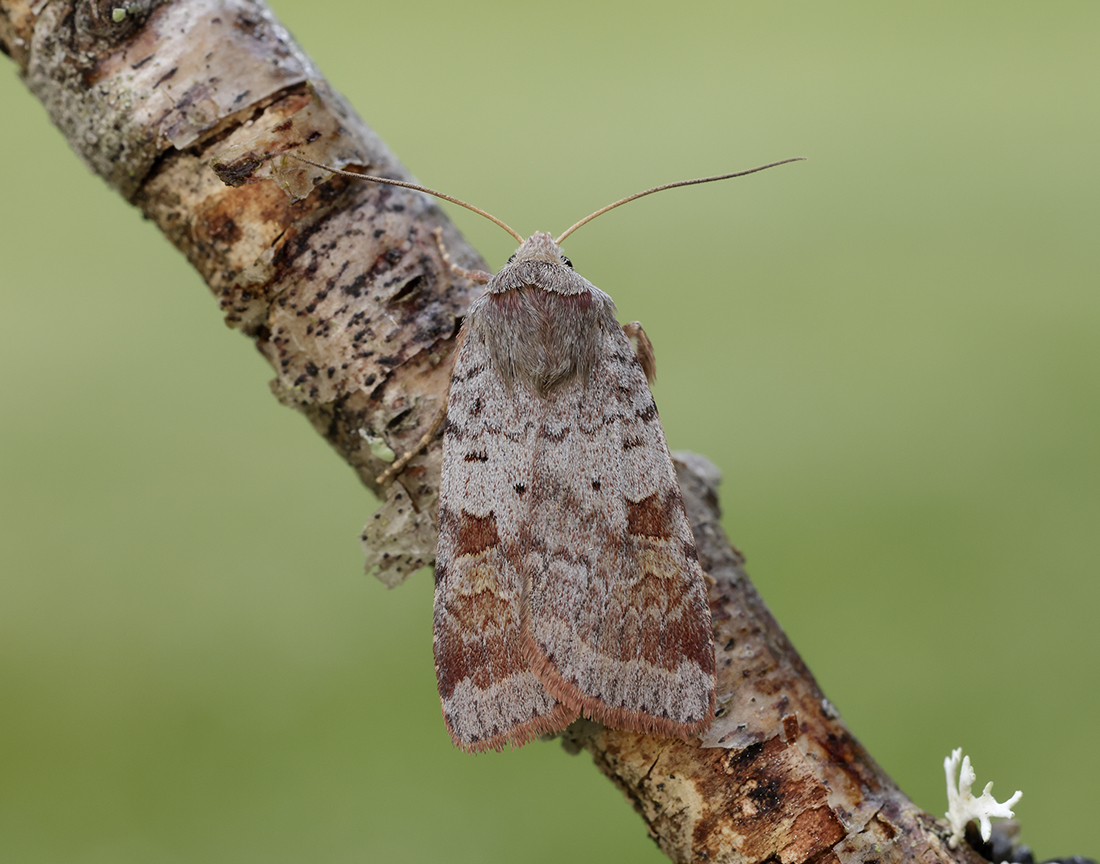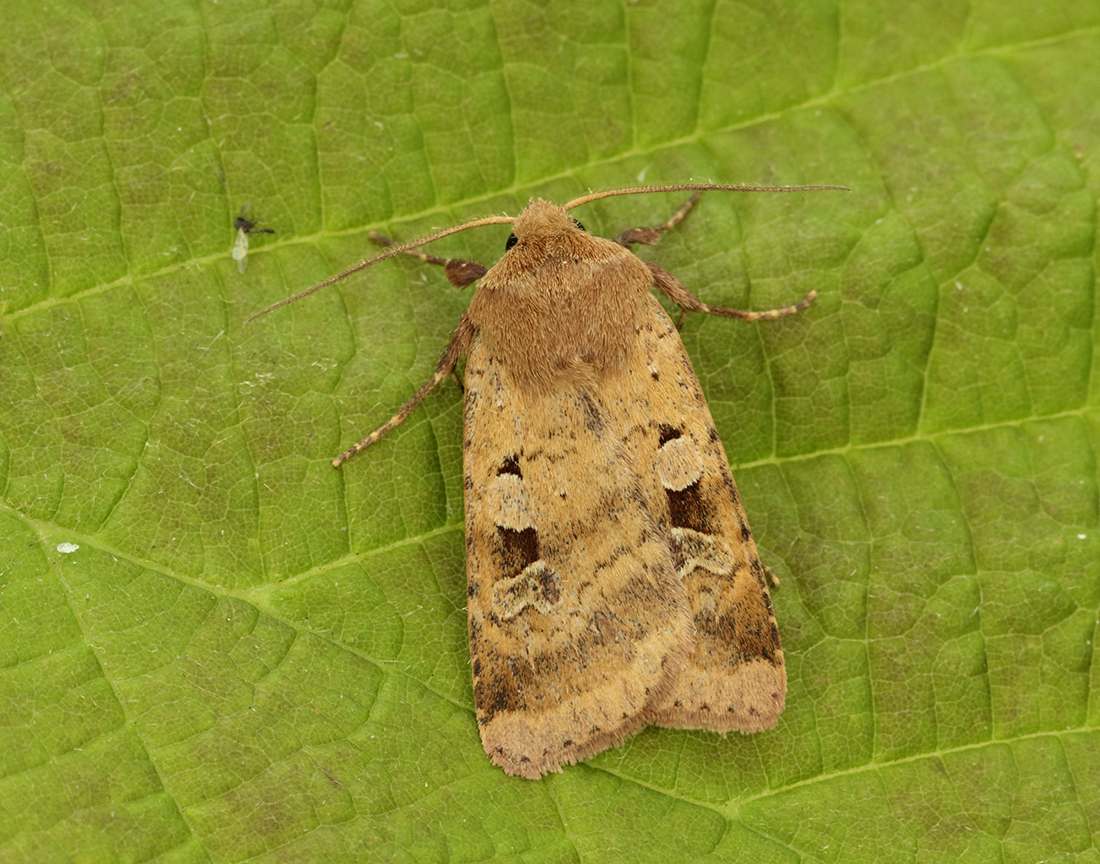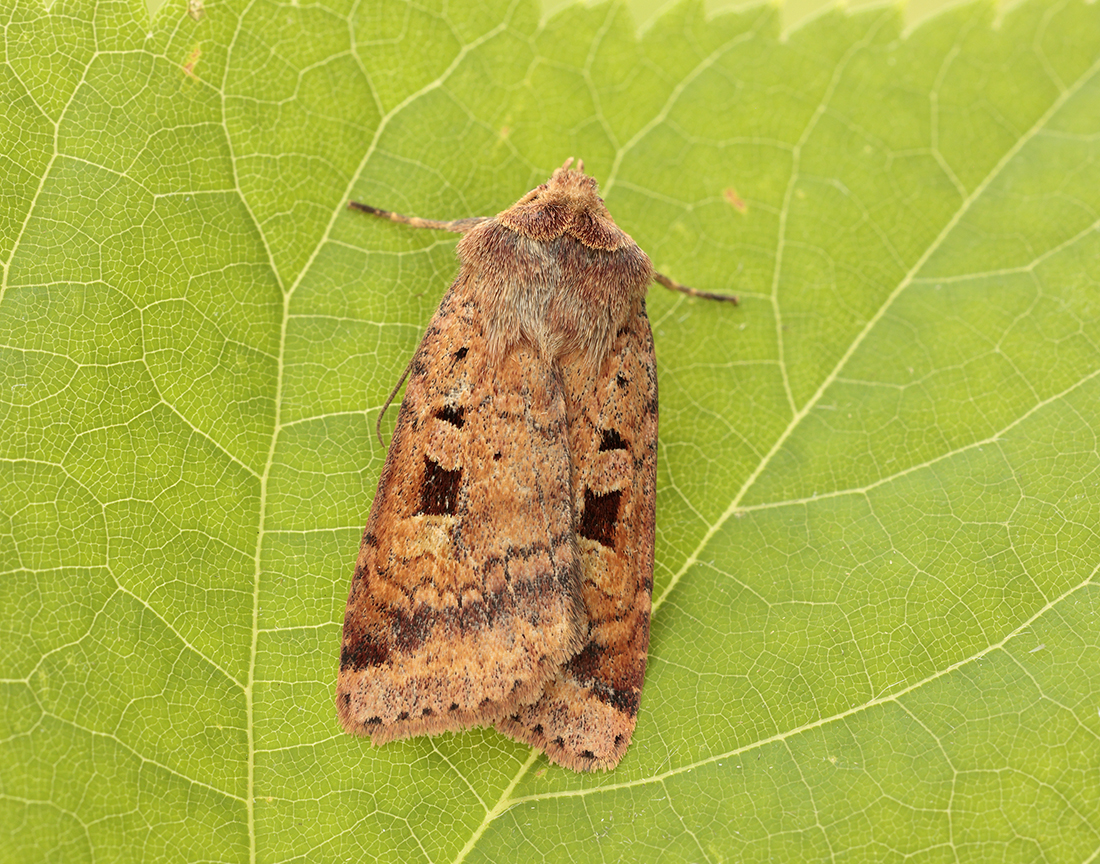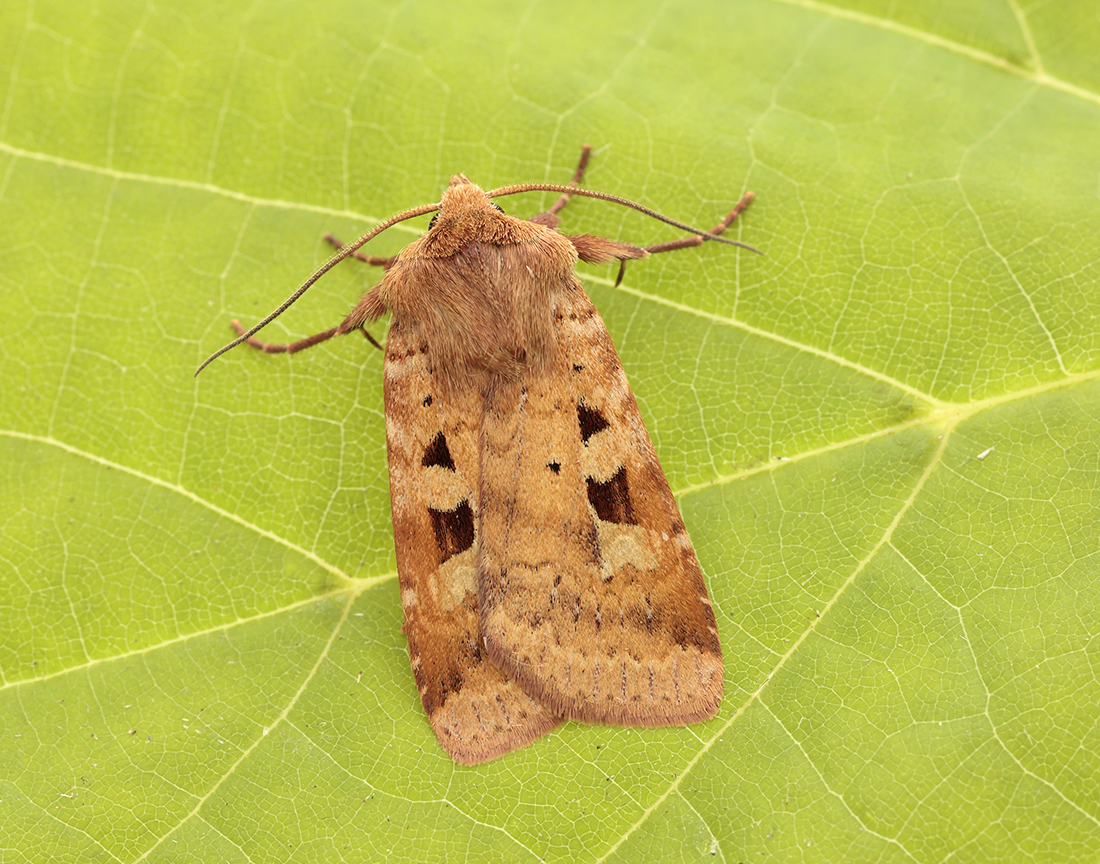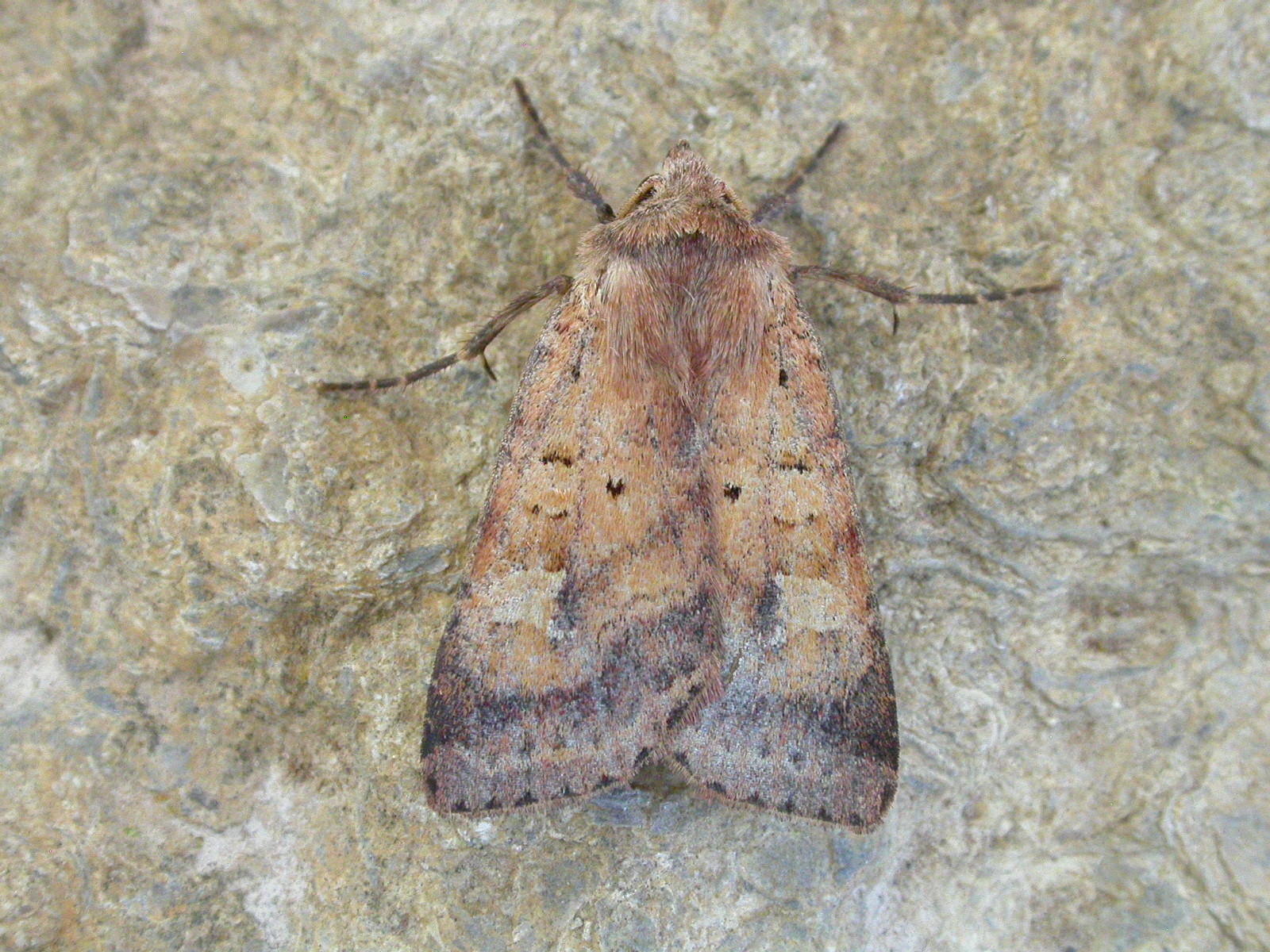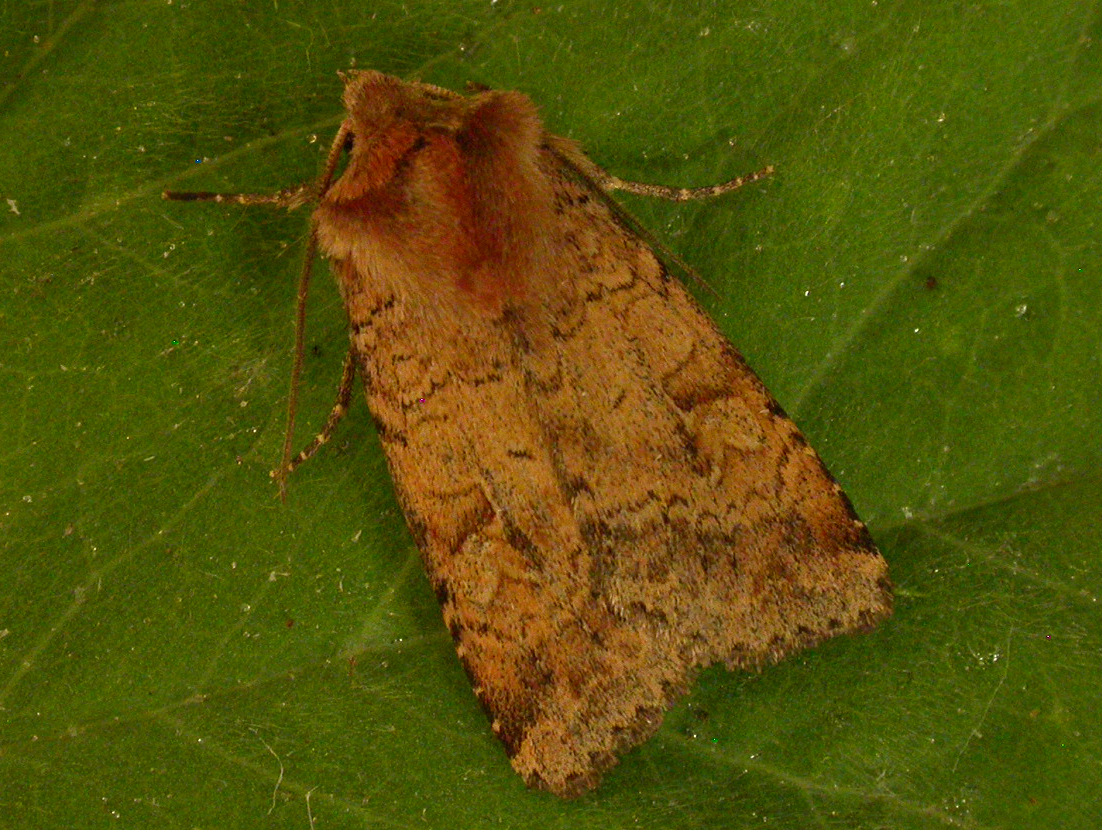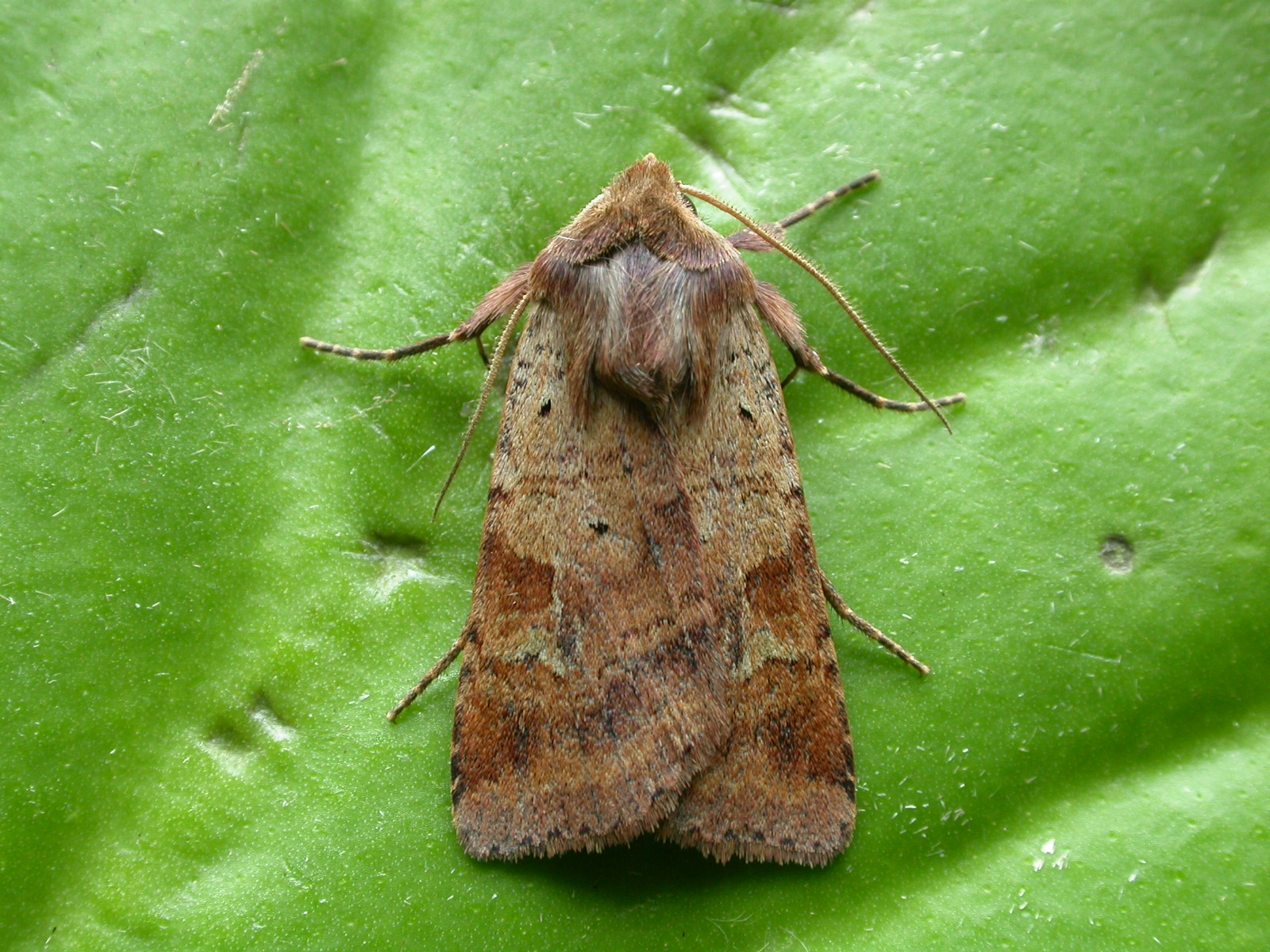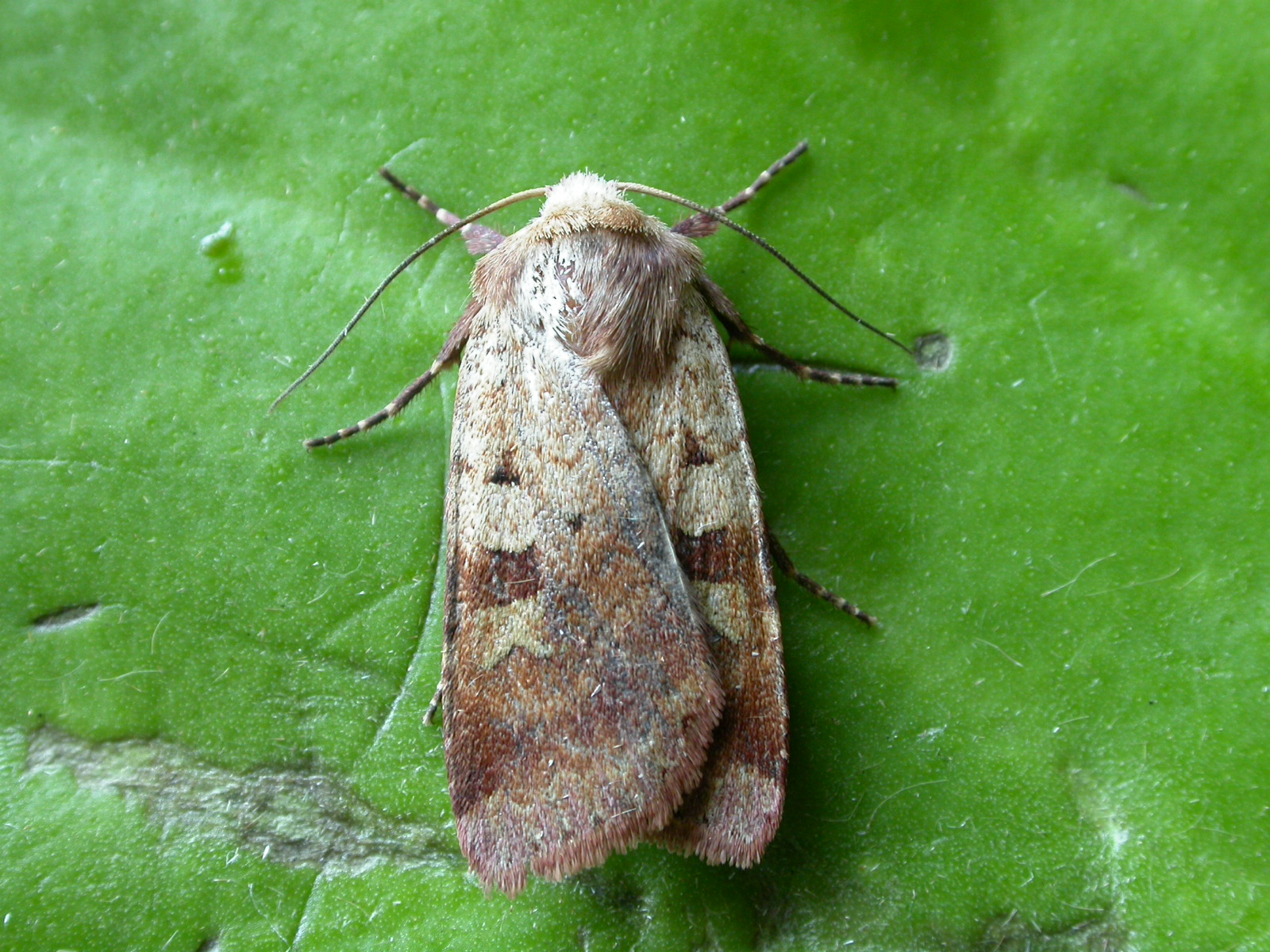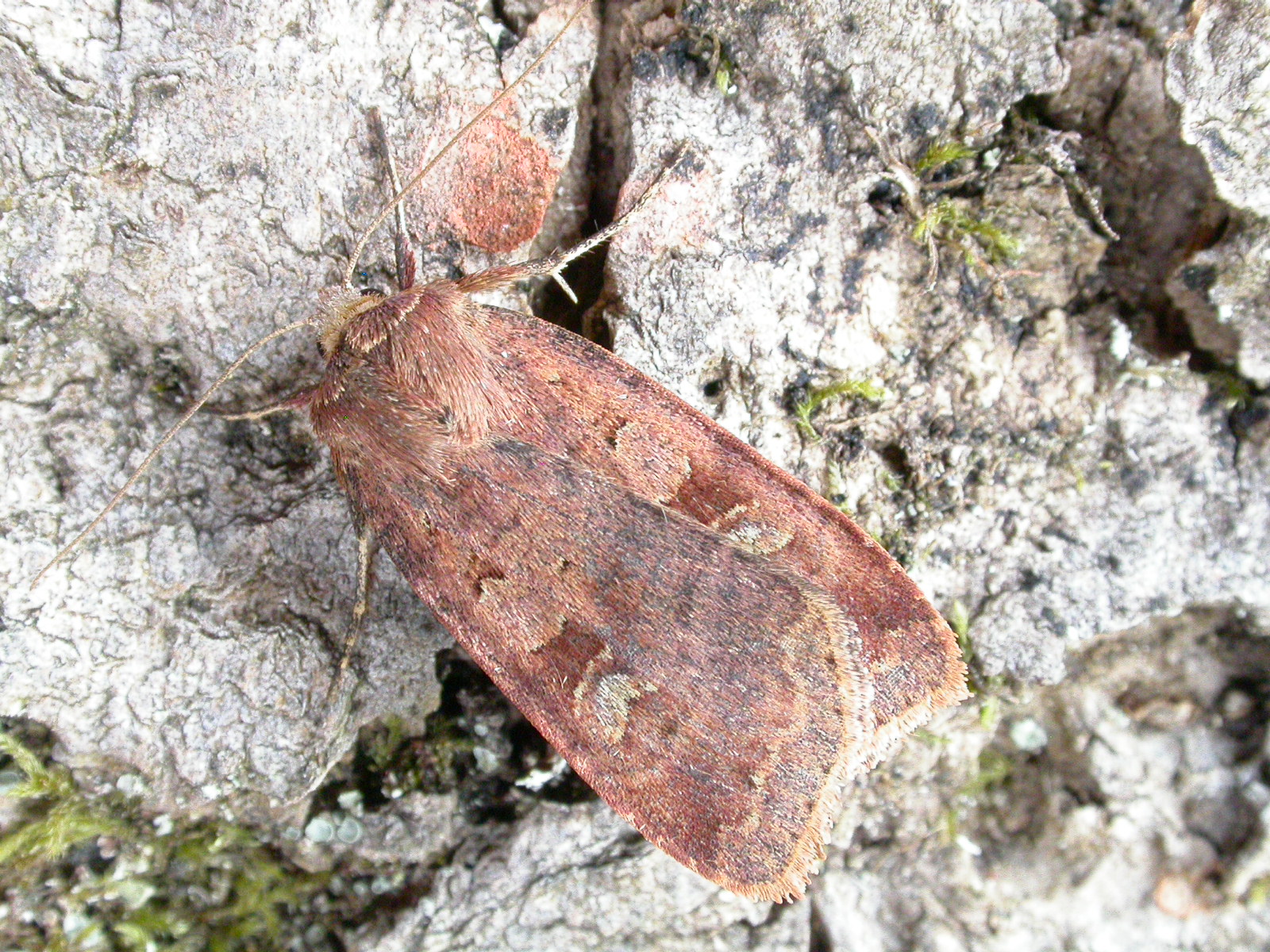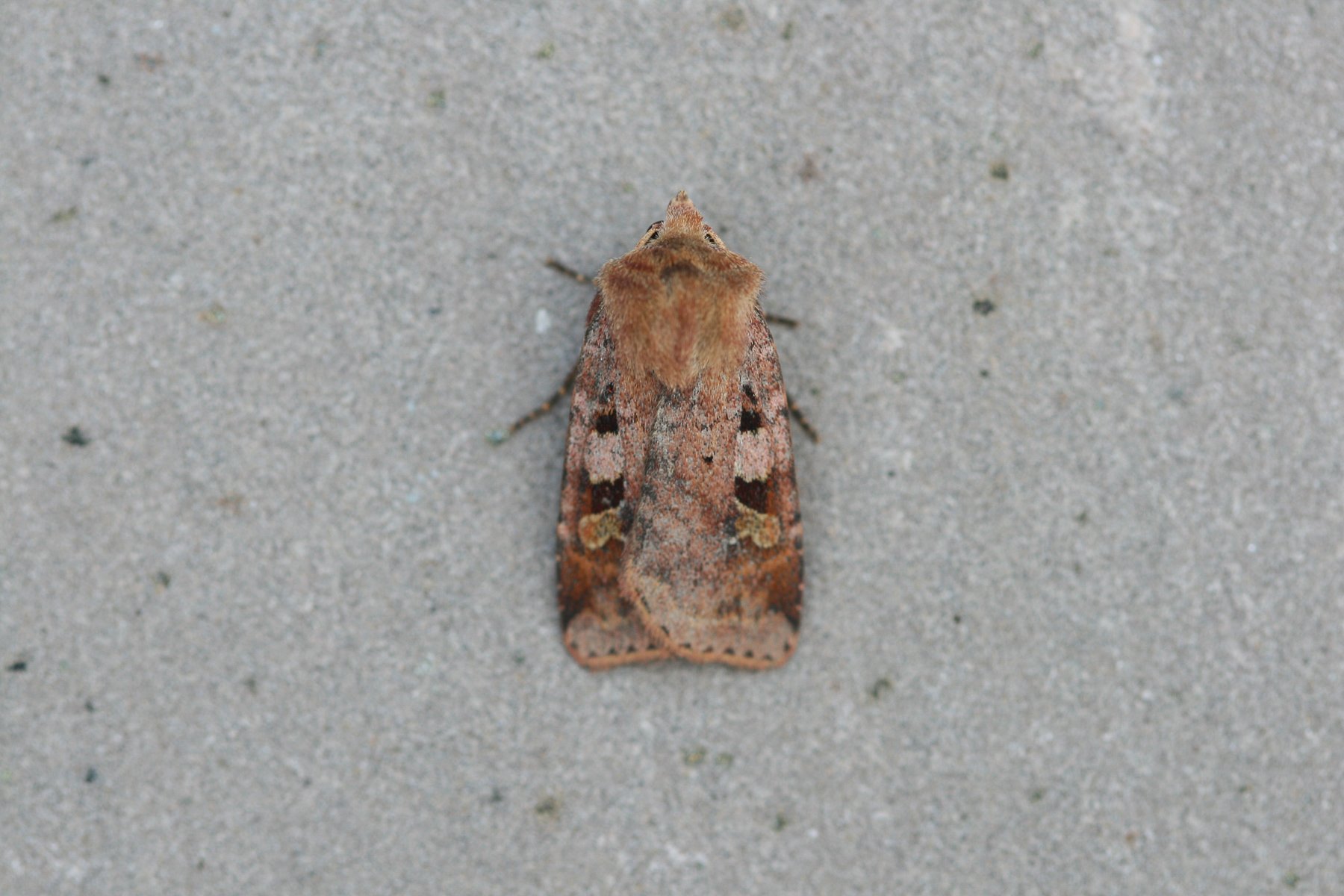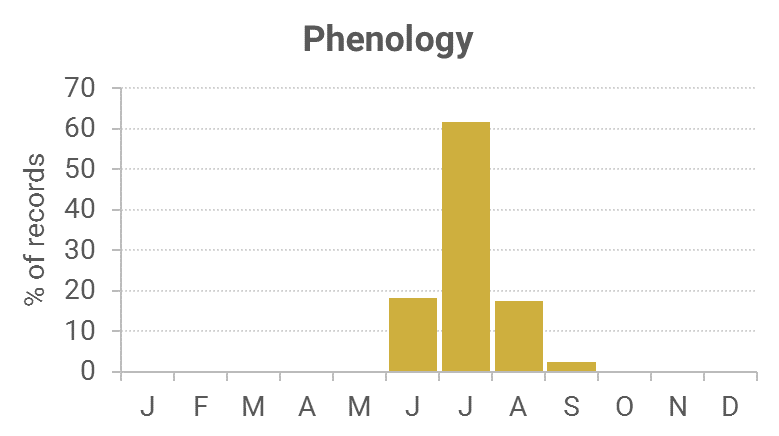Identification
Although a common moth it is easily misidentified as there are two other moths that have the central dot on the forewing. It is a very variable moth, but the black spot midway between the kidney-mark and oval on a marbled forewing that has a row of small arrowhead dark markings along the outer edge will help identification.
Recording Method.
Attracted to light, also comes to sugar and flowers.
Life cycle
One generation. Overwinters as a small larva, near the ground, during August to May, with pupation underground.
Larval foodplants
Bramble, Bilberry, hawthorns, heathers, sallows to name a few, but also herbaceous plants like Primrose and violets.
Habitat
Heathland and open moorland with heathers and woody plants.
History
Lennon (1863) stated that it was common around the Dumfries area. Douglas Robinson (1870-71) had found a few at sugar in July on Almorness (VC73). K. J. Morton of Edinburgh (1900) whilst on a visit in July 1899 to Wigtownshire had found this species in the Monreith area. Gordon (1913) had found it rather scarce and very variable, but it also came to sugar in the woods around Corsemalzie, Wigtownshire. Earliest date was 23rd June 1906.
Sir Arthur Duncan (1909-84) during his lifetime had found it at Closeburn, Tynron and Castlehill, Dumfries (all VC72). Archibald Russell (1944) listed it as occurring near Gatehouse of Fleet (VC73) during the years 1942-43.
During 1974-93 there were about 300 records from all of the Rothamsted stations. Then, from 1992 to 2010 there were over 450 records, with the regular trapped sites at Kirkton and Durisdeer (VC72), Mersehead RSPB and Cally Woods (VC73) providing a good portion of records. Others were found at a wide scattering of sites across the region.

